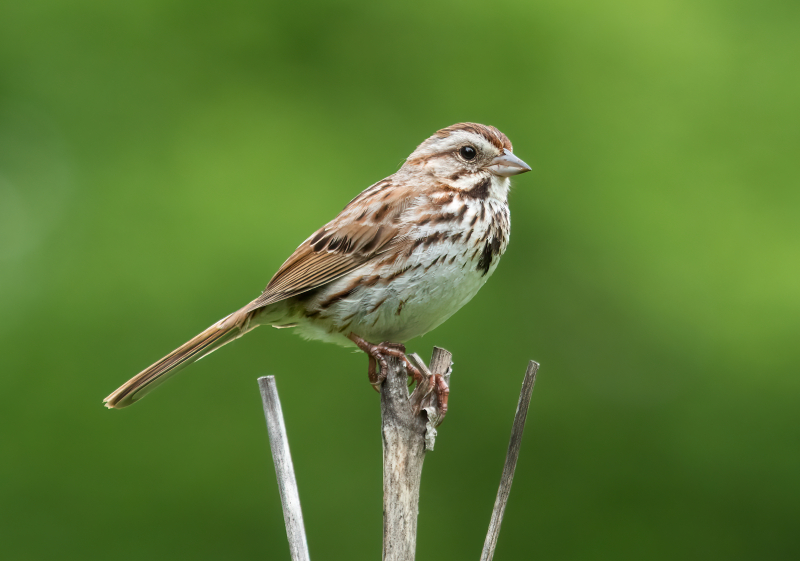Song Sparrow
The Song Sparrow (Melospiza melodia) is a medium-sized new world sparrow. Among the native sparrows in North America, it is easily one of the most abundant, variable, and adaptable species. These birds hunt for food on the ground, under bushes, or in very small bodies of water. They primarily eat seeds and insects. Small crustaceans may also be consumed by birds in salt marshes. They build their nests in trees or bushes or in a protected area on the ground. Song sparrows have higher overwinter survival rates and reproductive success when there are shrub cover areas in their region away from the intertidal beach.
Adult song sparrows have white underparts with dark striping and a dark brown mark in the middle of the breast, with brown upperparts and dark streaks on the back. They have a long, rounded brown tail and a brown cap. Each of their eyes has a brown streak running through a grayish face. They come in a variety of sizes across different subspecies (for subspecies details, see below). The eggs of the song sparrow are brown with greenish-white spots. Females lay three to five eggs per clutch, with an average incubation time of 13–15 days before hatching.












